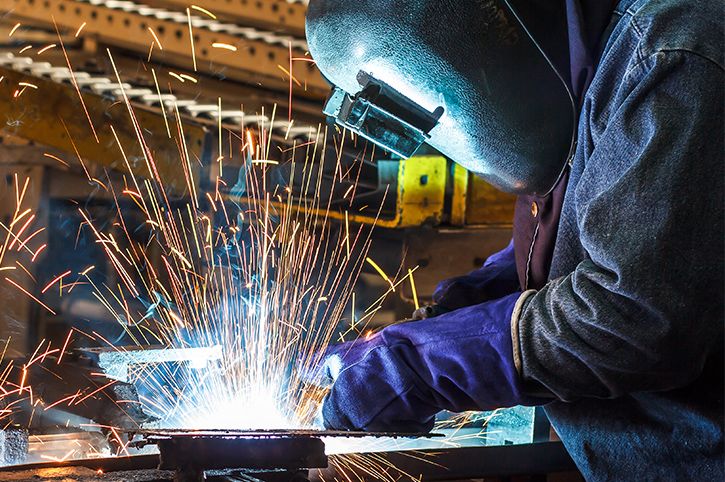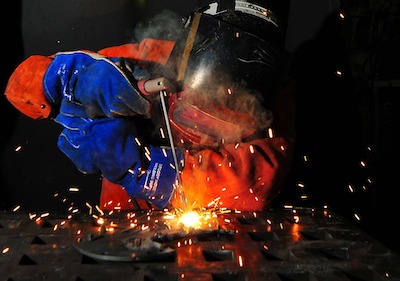All Concerning Welding: Key Insights Into Techniques and Ideal Practices for Success
Welding encompasses a selection of strategies, each fit for certain products and applications. Understanding these approaches, such as GMAW, SMAW, and TIG, is crucial for accomplishing perfect outcomes. The ideal equipment and security techniques can not be neglected. As preparation and fixing play important roles in the welding process, understanding these components can considerably improve the high quality of the end product. What are the crucial variables that assure a successful weld?
Recognizing Different Welding Strategies
Welding strategies include a selection of techniques, each fit to particular applications and products. Among the most usual strategies are Gas Steel Arc Welding (GMAW), Shielded Metal Arc Welding (SMAW), and Tungsten Inert Gas Welding (TIG) GMAW, also called MIG welding, is popular for its speed and adaptability, making it optimal for thin materials. SMAW, or stick welding, is favored for its simpleness and performance in exterior settings, particularly with thicker metals. TIG welding supplies precision and control, making it appropriate for elaborate work and non-ferrous steels (Montana Mobile Welding and Repair Welding). Each technique has its special advantages and considerations, permitting welders to choose the finest method based upon the project's requirements, material type, and desired end results. Comprehending these methods is essential for effective welding
Vital Welding Devices and Tools
While different welding methods call for particular skills, the right devices and devices are just as vital for achieving high quality outcomes. Crucial welding equipment includes welding makers, which vary relying on the strategy-- such as MIG, TIG, or stick welding. Protective gear, including handwear covers, safety helmets, and aprons, warranties security and comfort during the procedure. Additionally, clamps and fixtures help protect materials in area, making certain precision in welds. Consumables like welding rods, wire, and shielding gas are likewise crucial parts that affect the high quality of the weld. Additionally, tools such as grinders and cutters facilitate surface area preparation and post-weld ending up, adding to a specialist end result. Investing in top quality equipment ultimately improves the efficiency and efficiency of welding jobs.
Security Practices in Welding
Correct safety and security practices are crucial in the welding market to secure employees from possible dangers. Welders must use proper personal safety equipment (PPE), including safety helmets with correct shading, gloves, and flame-resistant garments. Appropriate air flow is essential to decrease exposure to hazardous fumes and gases generated during the welding process. Furthermore, employees should be learnt the correct handling of welding equipment to stop mishaps. Fire precaution, such as maintaining combustible products away from the welding area and having fire extinguishers easily available, are necessary. Normal examinations of tools and workspaces can aid recognize potential hazards before they lead to mishaps. By adhering to these security methods, welders can produce a more secure working atmosphere and decrease risks related to their trade.
Readying Products for Welding
Preparing products for welding is an important action that greatly affects the top quality and honesty of the final item (Montana Mobile Welding and Repair Welding). Correct preparation entails cleansing the surfaces to get rid of pollutants such as rust, dust, and oil, which can compromise the weld. Methods such as grinding, fining sand, or utilizing solvents are commonly utilized to attain a tidy surface. Furthermore, guaranteeing that the products fit together comfortably is necessary; spaces can lead to weak welds. It's additionally vital to take right into account the placement and positioning of the elements, as this will impact the ease of welding and the final outcome. Lastly, selecting the suitable filler material and guaranteeing compatibility with the base steels is necessary for accomplishing strong, durable welds
Tips for Getting High-Quality Welds
Accomplishing top notch welds calls for interest to detail and adherence to best methods throughout the welding procedure. Appropriate joint preparation is important, ensuring surfaces are clean and free from pollutants. Picking the suitable filler material and welding method based on the base steels is important for perfect bonding. Preserving consistent traveling rate and angle while welding can protect against problems and promote harmony. In addition, regulating warmth input is essential; too much warm can bring about warping and weakened joints. If needed, consistently checking the welds throughout the procedure permits for prompt changes. Finally, employing suitable post-weld therapies, such as cleaning and stress alleviation, can enhance the durability and stability of the weld, ultimately guaranteeing a successful end result.
Repairing Usual Welding Issues
Welding frequently provides challenges that can influence the top quality and honesty of the last item. Typical issues such as porosity, irregular weld grains, and getting too hot can emerge, each needing particular troubleshooting techniques. Comprehending these problems is essential for welders to enhance their abilities and attain excellent outcomes.
Porosity Issues Explained
Porosity can often be neglected, it remains a crucial concern in welding that can jeopardize the integrity of a completed item. Porosity describes the existence of tiny gas pockets within the weld bead, which can lead and weaken the joint to early failure. This trouble typically arises from pollutants, dampness, or improper securing gas coverage throughout the welding procedure. To minimize porosity, welders should validate that the base materials are dry and tidy, use proper protecting gases, and maintain regular welding criteria. Consistently examining the tools and setting can also aid recognize possible problems before they materialize in the weld. Resolving porosity properly is crucial for attaining solid, sturdy welds that satisfy high quality criteria.

Inconsistent Weld Beads
Inconsistent weld beads can greatly influence the top quality and stamina of an ended up product. Different factors add to this problem, including incorrect traveling rate, inaccurate amperage setups, and irregular electrode angles. When the welder moves as well promptly, a bead may show up slim and do not have penetration, while relocating also gradually can trigger excessive buildup. Furthermore, utilizing the incorrect amperage can cause either damaging or too much spatter, both of which concession weld honesty. The welder's method, such as irregular lantern movement, can likewise bring about uneven bead look. To mitigate these issues, welders need to concentrate on preserving consistent, regulated activities and guaranteeing appropriate equipment setups to attain harmony in their welds. Uniformity is essential to achieving solid and dependable welds.
Getting Too Hot and Bending Issues
Excessive warmth throughout the welding process can bring about considerable overheating and deforming problems, affecting the check here architectural integrity of the workpiece. These problems usually materialize as distortion, which can endanger positioning and fit-up, making further assembly these details challenging. Elements adding to overheating include the choice of welding specifications, such as voltage and take a trip rate, along with the kind of product being welded. To reduce these problems, welders must keep regular travel rate and suitable heat input while keeping an eye on the workpiece temperature. Furthermore, preheating or post-weld warmth treatment can help minimize anxieties brought on by rapid air conditioning - Montana Mobile Welding and Repair Fabrication. Normal assessment and adherence to best methods are vital in preventing getting too hot and making sure the durability and dependability of welded frameworks
Regularly Asked Inquiries
What Are the Job Opportunities in the Welding Market?
The welding market offers diverse profession possibilities, including positions as welders, designers, teachers, and examiners. Professionals can operate in manufacturing, building, aerospace, and auto fields, taking advantage of strong demand and affordable salaries in different functions.
Just How Can I Improve My Welding Rate Without Giving Up High Quality?
To enhance welding speed without giving up top quality, one need to practice reliable methods, maintain tools, maximize setups, and enhance hand-eye sychronisation. Routine training and seeking comments can additionally significantly add to attaining much faster, top quality welds.
What Accreditations Are Available for Welders?
Various certifications exist for welders, consisting of those from the American Welding Society (AWS), the National Center for Construction Education And Learning and Study (NCCER), and various industry-specific organizations. These credentials enhance employability and show ability proficiency.
Just How Does Welding Affect the Qualities of Metals?
Welding influences the buildings of metals by changing their microstructure, which can cause adjustments in ductility, strength, and solidity. Heat input and air conditioning prices throughout the procedure significantly affect these product attributes.
Can I Weld Dissimilar Metals With Each Other?
